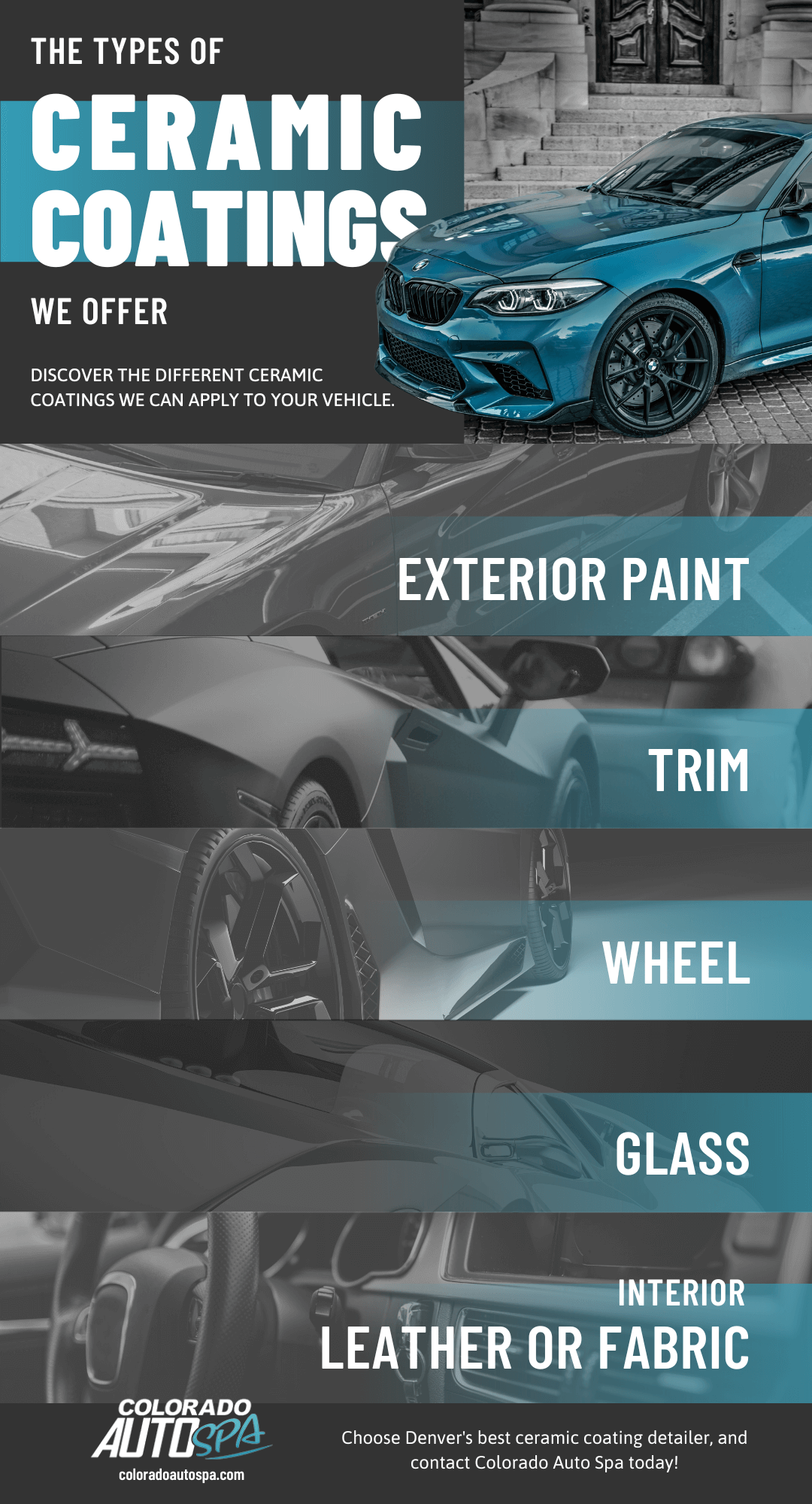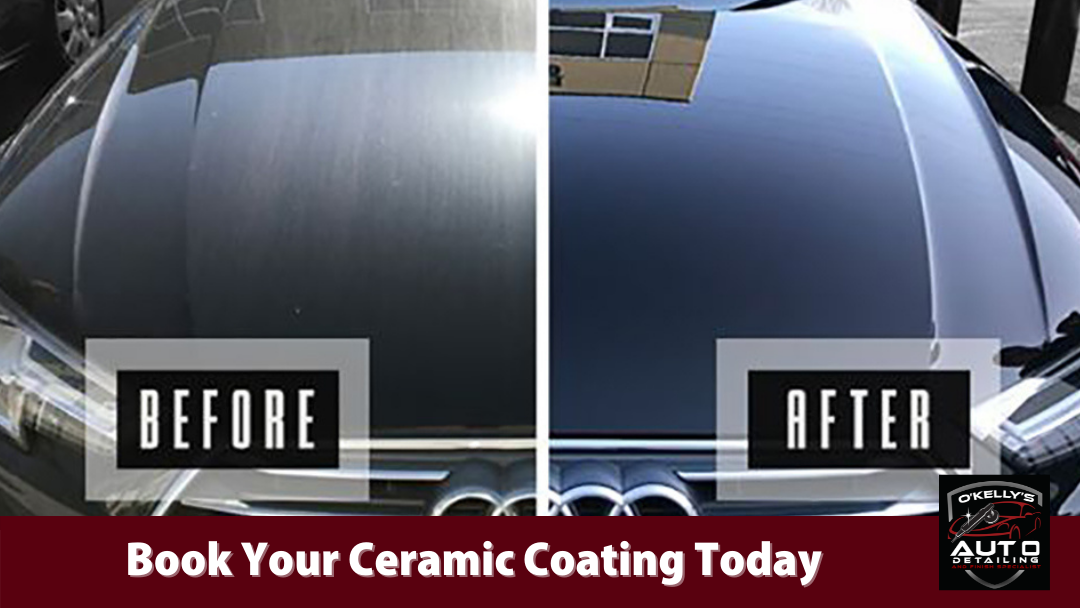Is Ceramic Coating Worth the Investment for Your Car’s Exterior?
Is Ceramic Coating Worth the Investment for Your Car’s Exterior?
Blog Article
Ceramic Covering vs. Typical Wax: Which Provides Much Better Long-Term Defense?
The discussion between ceramic layers and traditional wax for automobile defense has amassed considerable attention among automotive enthusiasts and experts alike. While both satisfy of securing paint, their differences in sturdiness, application, and lasting maintenance expenses might influence a customer's choice. Ceramic layers flaunt superior durability and resistance to environmental variables, yet the complexity of their application questions concerning ease of access and functionality. As we discover these contrasting alternatives, it comes to be important to take into consideration not just the instant advantages yet also the effects for lorry care with time.
Review of Ceramic Finish
Ceramic covering has actually obtained considerable popularity amongst automotive fanatics and detailers alike because of its sophisticated safety qualities. This innovative innovation is designed to produce a durable, hydrophobic guard over a lorry's paint surface, substantially enhancing its resistance to ecological pollutants such as dust, UV rays, and chemical spots. Unlike standard wax, which provides a short-term layer of protection, ceramic coatings bond at a molecular degree with the paint, providing long-lasting toughness-- commonly expanding past two years with proper upkeep.
The application process involves careful preparation of the automobile's surface, consisting of cleaning and polishing to make certain optimal attachment. As soon as applied, the finish cures to create a robust layer that not just adds deepness and gloss to the paint however also simplifies upkeep. With its hydrophobic properties, ceramic finish enables water and dirt to move off more quickly, minimizing the frequency of laundries and reducing the threat of swirl marks.
Furthermore, ceramic layers are offered in numerous formulas, enabling customers to select items tailored to their certain needs and choices. Generally, ceramic finish stands for a significant innovation in paint protection modern technology, supplying premium efficiency compared to standard choices.
Review of Traditional Wax
Traditionally considered a staple in automotive treatment, wax acts as a preferred choice for those seeking a straightforward approach to enhance and protect their car's paint - ceramic coating. Automotive wax generally makes up natural ingredients, such as carnauba, or synthetic compounds, designed to produce a protective layer externally of the paint. This layer not only enhances the vehicle's gloss and shine but also offers an obstacle against ecological pollutants
The application of wax is normally straightforward, making it obtainable for both professionals and do it yourself enthusiasts. It can be applied by hand or machine, permitting convenience in the outlining process. Once applied, wax requires a curing duration, after which it solidifies to form a safety shell. Wax is likewise understood for its ability to ward off water, promoting a beading effect that aids in the prevention of water places and corrosion.
Nevertheless, while wax works for boosting the visual allure of a lorry, it is essential to keep in mind that the protection it uses may necessitate extra constant reapplication contrasted to alternate products, such as ceramic finishings. In general, traditional wax remains a preferred choice for those prioritizing convenience of use and instant aesthetic renovation.
Toughness and Durability Comparison
While both ceramic coatings and traditional wax deal safety benefits for auto paint, their sturdiness and longevity vary dramatically. Conventional wax, generally made from natural carnauba or synthetic polymers, usually offers a protective layer that lasts roughly three to 6 months. This relatively short life-span necessitates routine reapplication to maintain ideal protection.
In contrast, ceramic layers are engineered from advanced nanotechnology, creating a covalent bond with the paint surface area. This results in a durable, hydrophobic layer that can endure for 2 to 5 years, depending on the item and environmental problems. The superior longevity of ceramic layers is attributed to their chemical structure, which offers boosted resistance to scratches, UV rays, and oxidation.

Security Versus Ecological Elements
Safeguarding an automobile's paint from ecological elements is critical for preserving its look and worth over time. Cars are constantly subjected to a variety of elements, consisting of UV rays, bird droppings, tree sap, acid rain, and road grime, every one of which can jeopardize the honesty of the paintwork.
Ceramic finishes give a robust defense against these environmental assailants. Unlike conventional wax, which can degrade rapidly under UV direct exposure, ceramic finishings form a sturdy, hydrophobic layer that stands up to the unsafe effects of sunlight and toxic wastes. This advanced innovation produces a chemical bond with the car's surface, using premium security that lasts for several years, even in harsh conditions.
In comparison, ceramic finishings maintain their protective qualities longer, dramatically lowering the risk of paint damages and guaranteeing that the car keeps its aesthetic appeal. As an outcome, ceramic finishings are progressively acknowledged as the premium option for long-lasting security versus environmental aspects.
Application and Upkeep Differences
The approaches of application and succeeding maintenance for ceramic coatings and typical see it here wax vary substantially, impacting the general customer experience and effectiveness of each item. Ceramic layers call for a more intricate application process, typically entailing surface prep work that includes cleaning, decontaminating, and brightening the car. When the surface prepares, the ceramic finish is used in a controlled environment, commonly requiring specialist expertise to make sure appropriate healing and bonding to the paint.

While both products enhance car appearance, the longer-lasting security supplied by ceramic finishings may justify their initial financial investment, regardless of the even more demanding application process. Conversely, traditional wax continues to be a look at this site popular option for those seeking an easier, albeit short-term, solution.

Final Thought
Finally, ceramic finishings demonstrate substantial benefits over typical wax in terms of toughness and ecological security. This Site With a lifespan extending 2 to five years and premium resistance to UV rays, dust, and chemical discolorations, ceramic finishes offer an extra efficient option for long-term lorry upkeep. Although the application process may call for specialist experience, the resulting cost savings and minimized regularity of reapplication emphasize the value of ceramic finishings for those looking for ideal vehicle defense.
The discussion between ceramic coverings and typical wax for car security has actually gathered considerable attention amongst automobile enthusiasts and specialists alike. Unlike traditional wax, which provides a momentary layer of protection, ceramic finishings bond at a molecular level with the paint, providing lasting sturdiness-- typically extending past 2 years with correct maintenance.
While both ceramic coatings and standard wax deal safety advantages for auto paint, their resilience and longevity differ considerably. For cars and truck lovers seeking long-lasting security, ceramic layers present an engaging advantage over standard wax items.
In verdict, ceramic coatings demonstrate significant benefits over traditional wax in terms of longevity and environmental security.
Report this page